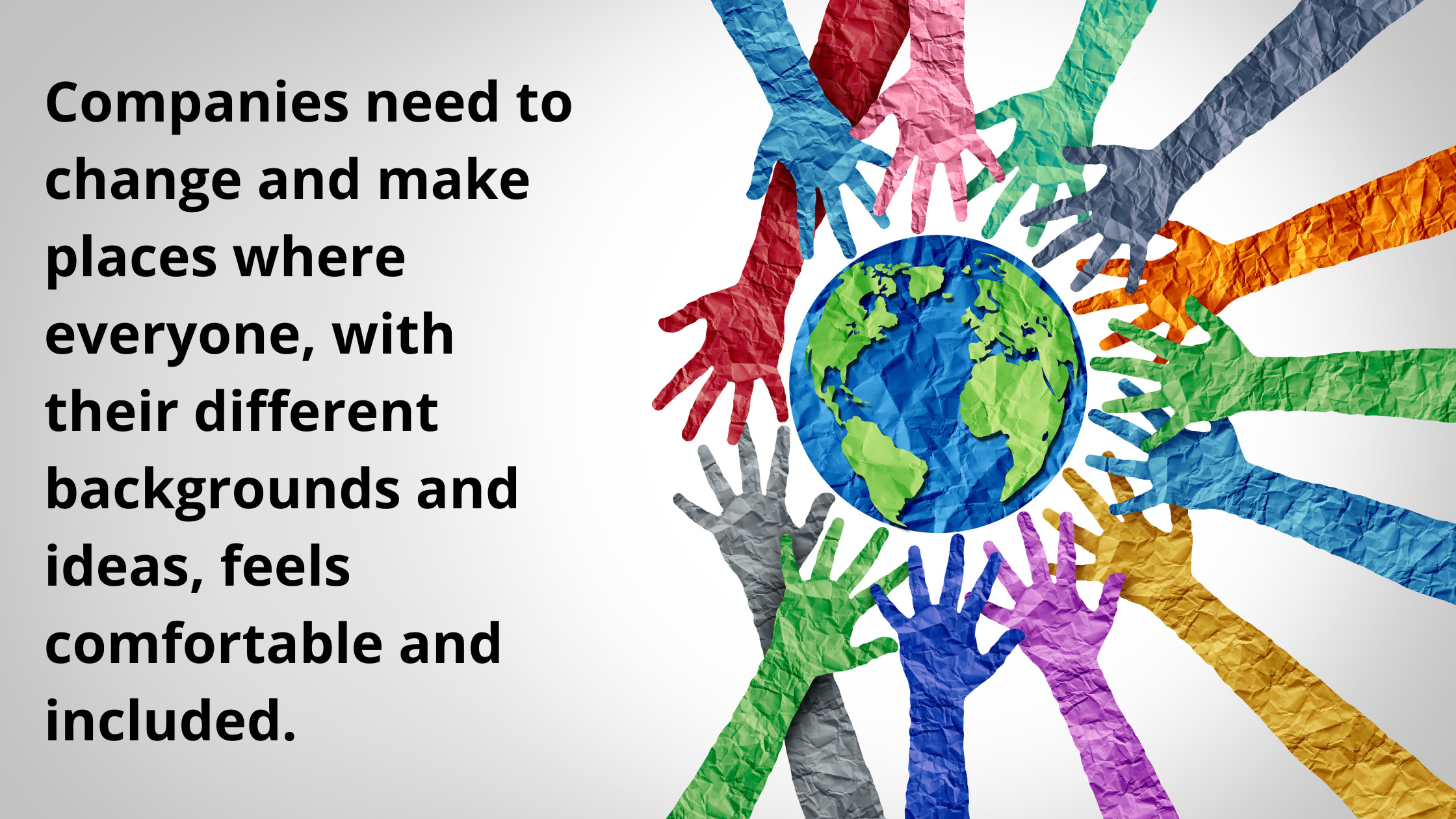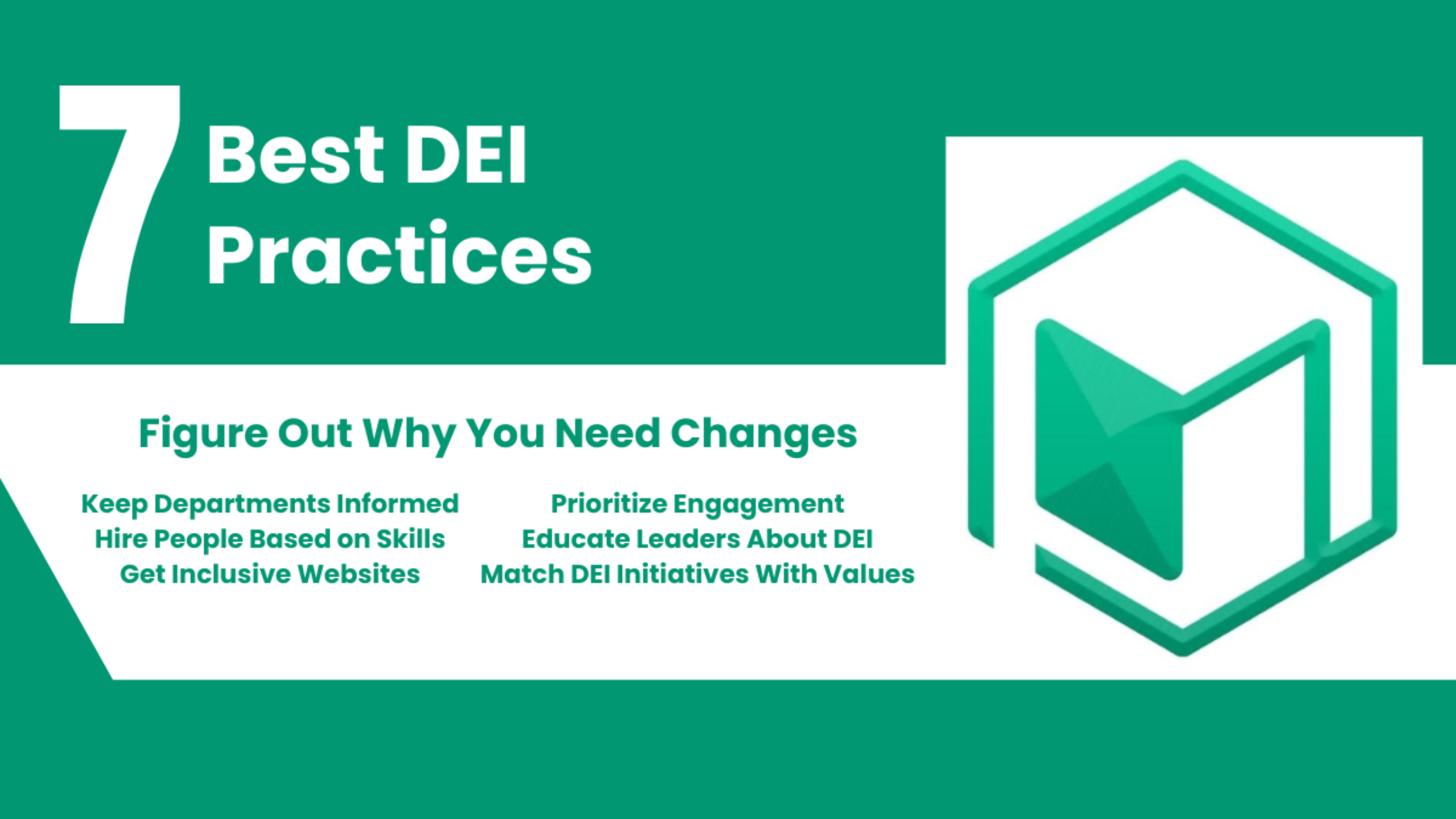[Millennials and Gen Z] see diversity as the acceptance and embracement of coworkers with differences in education, personalities, skill sets, experiences, and knowledge bases. So, not only do they see diversity in the traditional sense, but they are also adding culture and knowledge to the mix. — Aida Fazylova, Founder and CEO, XOR
Diversity, equity, and inclusion (DEI) have become central tenets of the modern workplace. Companies are increasingly recognizing that they need to create a more diverse and inclusive environment. But, even though many have been trying to do this for a while, they often find it hard to make real progress.
So, the big question is, how can companies do DEI right and really make a positive and lasting difference?
In this blog, we will explore the key strategies that'll help you really make your workplace diverse and inclusive. So, let's check out what works!
The Business Case for Embracing Diversity, Equity, and Inclusion

Besides just being a social responsibility, embracing diversity, equity, and inclusion has become a sound business strategy. The numbers show that it's crucial to have a mix of people and treat everyone fairly in the workplace.
Diverse Workforce
Nearly half of the younger generation, called Gen Z, who are starting to work, come from different racial or ethnic groups. This change shows that companies need to change and make places where everyone, with their different backgrounds and ideas, feels comfortable and included.
Enhanced Employee Happiness
Employees who feel their employers are engaged in DEI efforts have 12 points higher happiness scores. When people are respected and appreciated at work, they become happier and more involved in their jobs. Businesses in Canada have started taking cognizance of diversity and inclusion in their workforce.
Improved Financial Performance
Companies that prioritize diversity and inclusion typically perform better than those with less diversity. Diverse companies often see a per-employee cash flow that is 2.5 times higher.
Increased Productivity
Teams that emphasize diversity and inclusion tend to achieve a 35% increase in productivity. This helps them develop new and smart ways to solve problems and do their jobs better, giving them a strong edge over others in the competition.
Employee Engagement and Retention
When companies support diversity and inclusion, they are 2.6 times more likely to make employees feel engaged and stay with the company. A workplace that's diverse and inclusive helps employees feel like they belong and want to stay.
However, despite the potential advantages, the reality is that many organizations are still struggling with the right approach to DEI efforts. According to a Gallup survey, only 28% of people strongly felt their companies treated everyone fairly.
One key reason for the lack of diversity, particularly in leadership roles, is the newness or absence of organizational diversity programs. According to the HR Research Institute survey:
- Just 22% of HR professionals believe their organizations have advanced or expert-level DEI initiatives.
- About one-third feel that their DEI efforts are in their early stages.
- 13% admitted that very little or nothing has been done to promote DEI.
- Fewer than 10% of HR professionals consider their DEI initiatives "very effective."
To handle DEI challenges and get the most out of the big business benefits, companies need to follow the right path. They should ensure their efforts are not just surface-level but deep and long-lasting.
Best Practices for Diversity, Equity, and Inclusion

Let’s talk about practices to incorporate for DEI:
Figure Out Why You Need to Make Changes
To ensure a meaningful and effective approach to diversity, equity, and inclusion, companies should prioritize clear and genuine reasons for change. This practice goes beyond following trends or superficial gestures and focuses on driving real transformation. To achieve this:
- Assess your organization's current DEI status.
- Define where you aspire to be in terms of DEI.
- Identify a compelling and authentic reason to make the change.
This way, ground your DEI initiatives in a well-thought-out purpose to move beyond token efforts and create a diverse and inclusive workplace.
Ensure Every Department Is Informed and Aligned
For a successful DEI approach, each of your departments should be informed and aligned. In fact, 52% of employees say that their employers conduct training and meetings for DEI. To achieve this:
- Start by informing leaders and managers about the DEI strategy.
- Adopt unbiased hiring practices to build a diverse and inclusive workforce from the outset.
- Encourage mentorship and development programs for underrepresented employees to boost morale.
- Organize DEI educational events to raise awareness and provide opportunities for learning and discussion.
Ensure you involve every department as you build a culture of awareness and inclusivity.
Hire People Based on Their Skills, Not Just Their Degrees
The way the importance of college degrees is seen is changing. Focusing on skills is now a very important part of diversity and inclusion:
- Evaluate candidates based on their skills and competencies rather than solely relying on formal education.
- Craft job descriptions that emphasize skills and experience rather than traditional qualifications.
- Implement blind recruitment processes to eliminate bias and assess candidates purely on their skills.
- Invest in training and development programs to upskill and reskill your existing workforce, promoting a culture of continuous learning.
- Ensure diverse interview panels to minimize unconscious bias and encourage a fair evaluation of candidates.
A skills-first hiring approach expands workforce diversity by providing equitable job opportunities to a broader, more varied talent pool, challenging traditional hiring norms.
Create Easy and Inclusive Websites
In a globalized world with diverse employee and customer bases, a best practice is to design a website User Interface/User Experience (UI/UX) with inclusivity in mind. To create comprehensive website experiences:
- Incorporate culturally inclusive elements in UI design, such as color choices and imagery, to ensure a welcoming atmosphere.
- Offer content in multiple languages and ensure readability for all users, regardless of language proficiency.
- Make website navigation simpler, making it intuitive for all users.
- Comply with accessibility standards (e.g., WCAG) to accommodate disabled individuals.
- Use diverse and representative imagery that resonates with a global audience.
This way, you can engage diverse audiences, enable positive interactions, and show your commitment to DEI, benefiting employees, customers, and the organization as a whole.
Match Your DEI Initiatives With Company Values
Nearly two-thirds of HR experts feel DEI initiatives improve an organization’s mission, vision, and values. So, integrating DEI efforts with company values is vital. To ensure success, follow these practices:
- Begin with an unbiased assessment of your work environment to identify areas for improvement.
- Ensure that your DEI initiatives resonate with your organization's culture and goals.
- Regularly monitor and update how you implement DEI initiatives to reflect your company's evolving dynamics accurately.
- Ensure you promote diversity and inclusion at all organizational levels, from leadership to entry-level positions.
This way, you can weave DEI initiatives into your company's values and culture to create a more inclusive and equitable work environment.
Prioritize Active Listening and Engagement
Diversity requires commitment. Achieving superior performance diversity can produce further action– most notably, a commitment to develop a culture of inclusion. People do not just need to be different, they need to be fully involved and feel their voices are heard.
— Alain Dehaze, former CEO of Adecco
Companies should really listen to and involve people from underrepresented groups. Instead of guessing what they need, they should ask them about their experiences and ideas. This helps to take meaningful actions to make things better. Here's how you can do it:
- Create channels for open, honest feedback from all employees.
- Equip leaders and employees with the skills to listen and engage in inclusive conversations actively.
- Regularly gather data and insights to understand the unique challenges marginalized groups face.
- Act on the feedback received to address DEI challenges and foster inclusivity.
Remember, active listening and engagement instill a sense of ownership among employees. It also ensures that DEI initiatives are tailored to match the real challenges underrepresented groups face.
Educate Leaders About Diversity and Inclusion
92% of business leaders agree a strategic workforce education program should help an organization achieve its diversity and inclusion goals. So, a strategic workforce education program is important to reach your diversity and inclusion goals. To accomplish this:
- Leaders should engage in thorough DEI training to understand the significance, principles, and impact of these initiatives.
- Leaders must exemplify DEI values through their actions to create a culture of inclusivity from the top down.
- Encourage leaders to stay updated on evolving DEI best practices, laws, and industry trends.
- Link DEI goals to performance metrics to hold leaders accountable for creating a diverse and inclusive workplace.
For example, General Motors (GM) and CEO Mary Barra have joined leaders from diverse sectors to oppose law enforcement violence, racial bias, and discrimination. GM hosts an Inclusion Advisory Board with internal and external leaders working to address systemic barriers to inclusivity.
DEI is not just a term, it is a continuous practice
Embracing Diversity, Equity, and Inclusion is more than a trend; but a core value. While challenges persist, the path to genuine DEI through best practices includes educating leaders, understanding the reasons for change, and embracing a skills-first approach. These practices collectively drive inclusivity and progress. Tap on the right approach to DEI and create a workplace that champions diversity as a strength!





Leave a reply